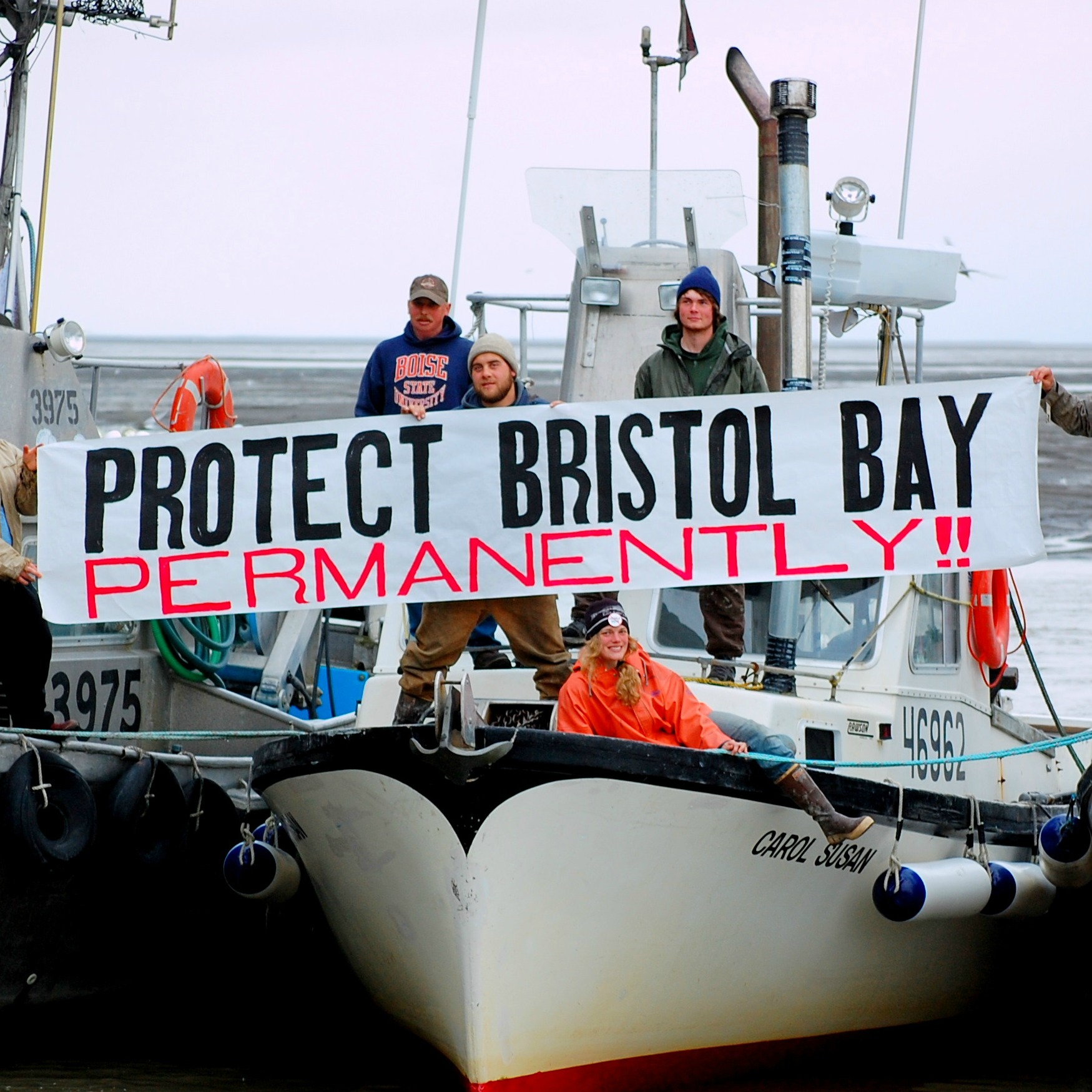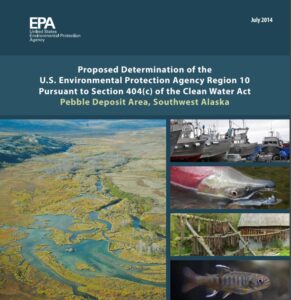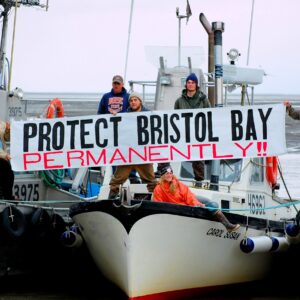
What did we tell the EPA?
What did we tell the EPA about protecting Bristol Bay in comments Trustees submitted to the Environmental Protection Agency this month on behalf of our client, Nunamta Aulukestai?

What did we tell the EPA? First of all, to follow its on conclusions about the protections necessary to safeguard fish in Bristol Bay.
The EPA already knows the risk
The EPA concluded in its 2014 Proposed Determination that mining in the headwaters of Bristol Bay will pose unacceptable risks and damage to the watershed. It emphasized that this threat exists even for the smallest of mine scenarios.
In the Determination, the EPA does not identify what a safe mine size or design would look like, but uses three mine sizes to provide examples. It found that, no matter the mine size, the risks and impacts were too severe.
The EPA knows the significance of the watershed
The Determination further describes the Bristol Bay watershed as boasting unrivaled salmon diversity and productivity; as nourishing abundant, genetically diverse wild Pacific salmon runs that support the entire ecosystem; as providing economically vital commercial and sport fisheries for salmon and other fish; as sustaining a 4,000-year-old subsistence-based way of life that is irreplaceable.
In its own words:
Bristol Bay is remarkable as one of the last places on Earth with such bountiful and sustainable harvests of wild salmon. One of the main factors leading to the success of this fishery is the fact that its aquatic habitats are untouched and pristine, unlike the waters that support many other fisheries.
The EPA knows that there is no such thing as a small mine
Bristol Bay already has an economic engine. It is the fish nourished by Bristol Bay.
Pebble wants to mine low-grade copper and gold on top of that thriving watershed. Now Pebble Limited Partnership claims it will propose a smaller mine.
Even before the latest Pebble PR on its intentions, the EPA acknowledged that a so-called small mine would likely expand due to the amount of ore and the desire of industry interests to profit from it.
Pebble also knows there is no such thing as a small mine. Pebble’s parent company, Northern Dynasty Minerals, touts the mine to potential investors as the world’s largest undeveloped copper and gold deposit.
In a September webcast presentation to investors, Northern Dynasty’s CEO Ron Thiessen said “…the reality is this represents development for many years, perhaps centuries into the future, and when you build the infrastructure in there and you’ve got the concentrator, you can feed it forever.”
The EPA is responsible for protecting water
The Clean Water Act is a law essential to EPA’s mission to protect and restore the environment and public health for current and future generates.
Under the act, the agency must follow a process that includes public notices, public comment, and consultation with all affected parties, especially Native Tribes, before making a section 404(c) final determination to prohibit, deny or restrict the disposal of discharge, or of dredged or fill material at a specific site.
The EPA went through extensive public outreach and engagement before presenting its Proposed Determination in 2014.
The EPA has no reason to withdraw the protection protections
Science and public input supported the protections posed in the Proposed Determination back in 2014, and they support protections now. The EPA’s rationale for withdrawing the protections is political, non-factual, and irrelevant to Pebble’s ability to submit a permit application.

What did we tell the EPA? The same thing the people of Bristol Bay has said for over ten years. Photo by Luke Strickland.
Pebble has promised a permit application for over a decade. It could have submitted an application many years ago. It could have submitted an application any time during the EPA’s section 404(c) review. It could have submitted a permit application any time since.
The EPA’s decision to withdraw the 2014 Proposed Determination is unsupported by science or law. It instead kicks a thorough ecological risk assessment and public process out the door because of political allegiances and agendas.
The EPA has abused the administrative process
By reversing a course of action based on three years of in-depth scientific, peer-reviewed analysis, and a public process that included eight public hearings and over one million public comments, the EPA has rejected the intent of the Clean Water Act and abdicated its responsibilities to it.
The EPA has, in short, turned its back on its obligation to safeguard our waterways and environment, and the fish, wildlife and people that depend on Bristol Bay.
The EPA has a duty to Americans to adhere to the protections proposed by its own 2014 Proposed Determination.




